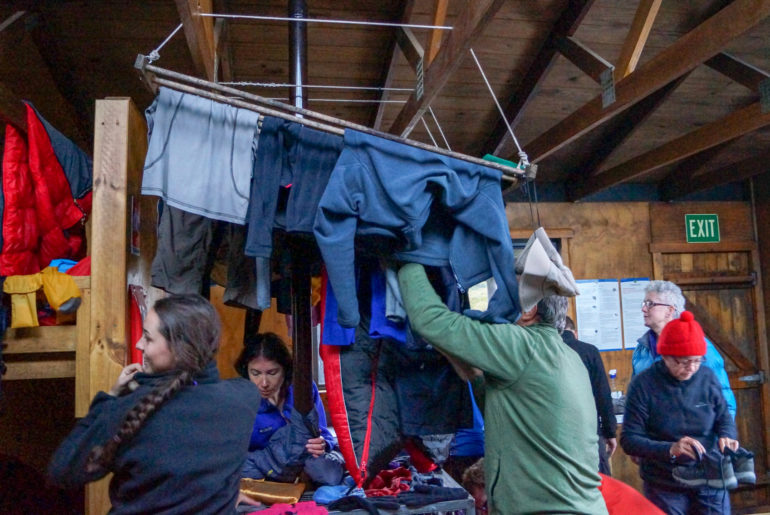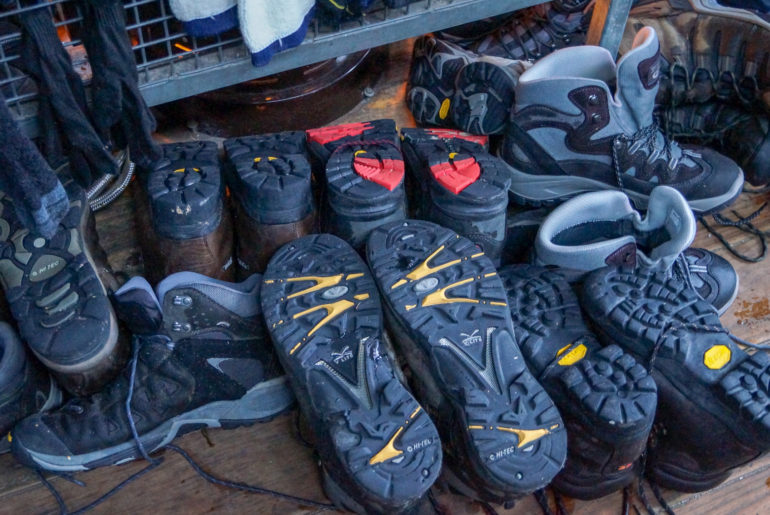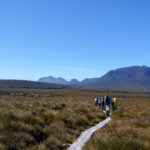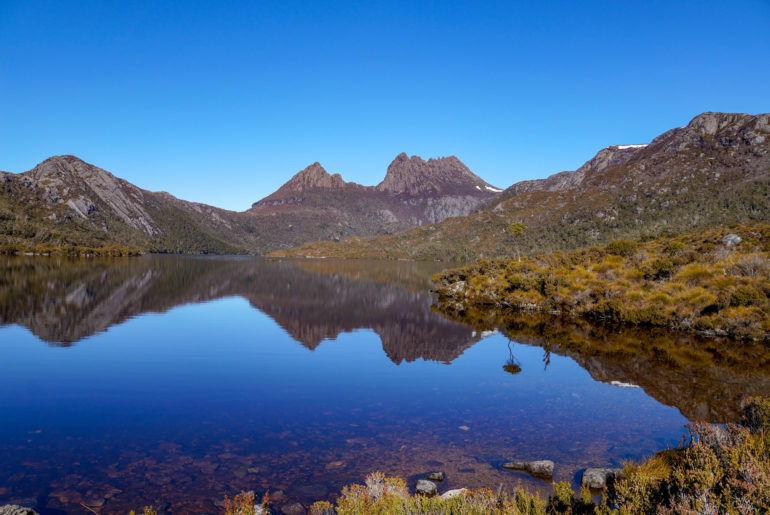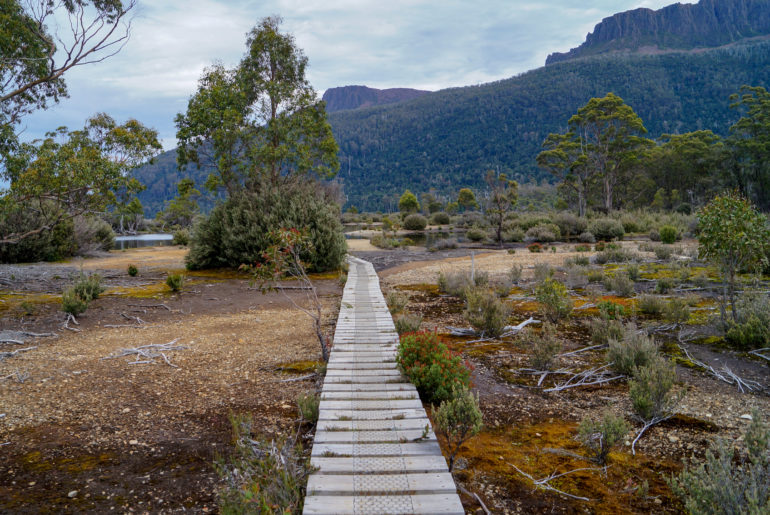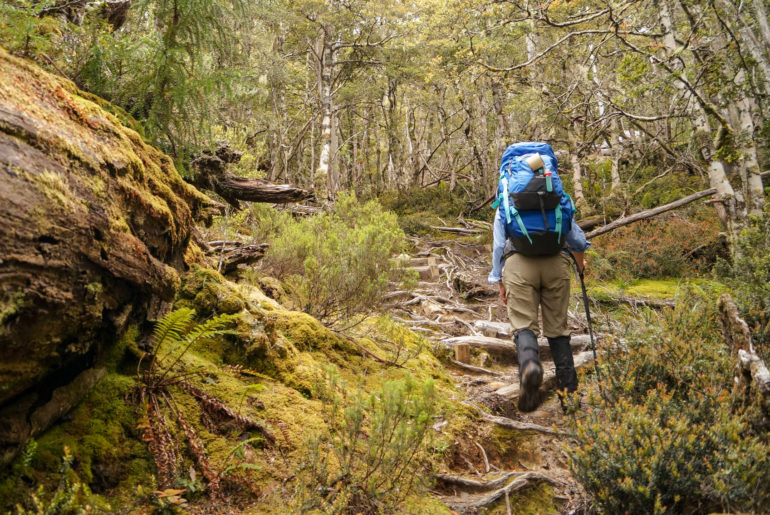Asleep in a sausage-like row of hikers in sleeping bags, my eyes snap open. The wind, which has terrorised me all day, is now threatening to rip the roof off the hut. Just how sturdy is this wooden building, I wonder as the wind roars like thunder.
On any other night, the outrageous noise would keep me awake. But I don’t care anymore what the weather is doing outside. I am finally dry, warm and able to rest, so I savour the comfort and go back to sleep.
In the morning I am one of the last to rise. The German couple, who stayed an extra night to avoid walking another day in foul weather, have already left, a strategy they maintain for the rest of their trip. My clothes, hung over a roofing beam while I slept, have dried. No such luck with my boots. I screw up my face as I slip my fresh socks into them, but after a few steps the squelchy sensation doesn’t bother me. Wet boots seem a minor inconvenience in the scheme of things.
Yesterday, nature punched me in the face. It’s probably going to do it again today.
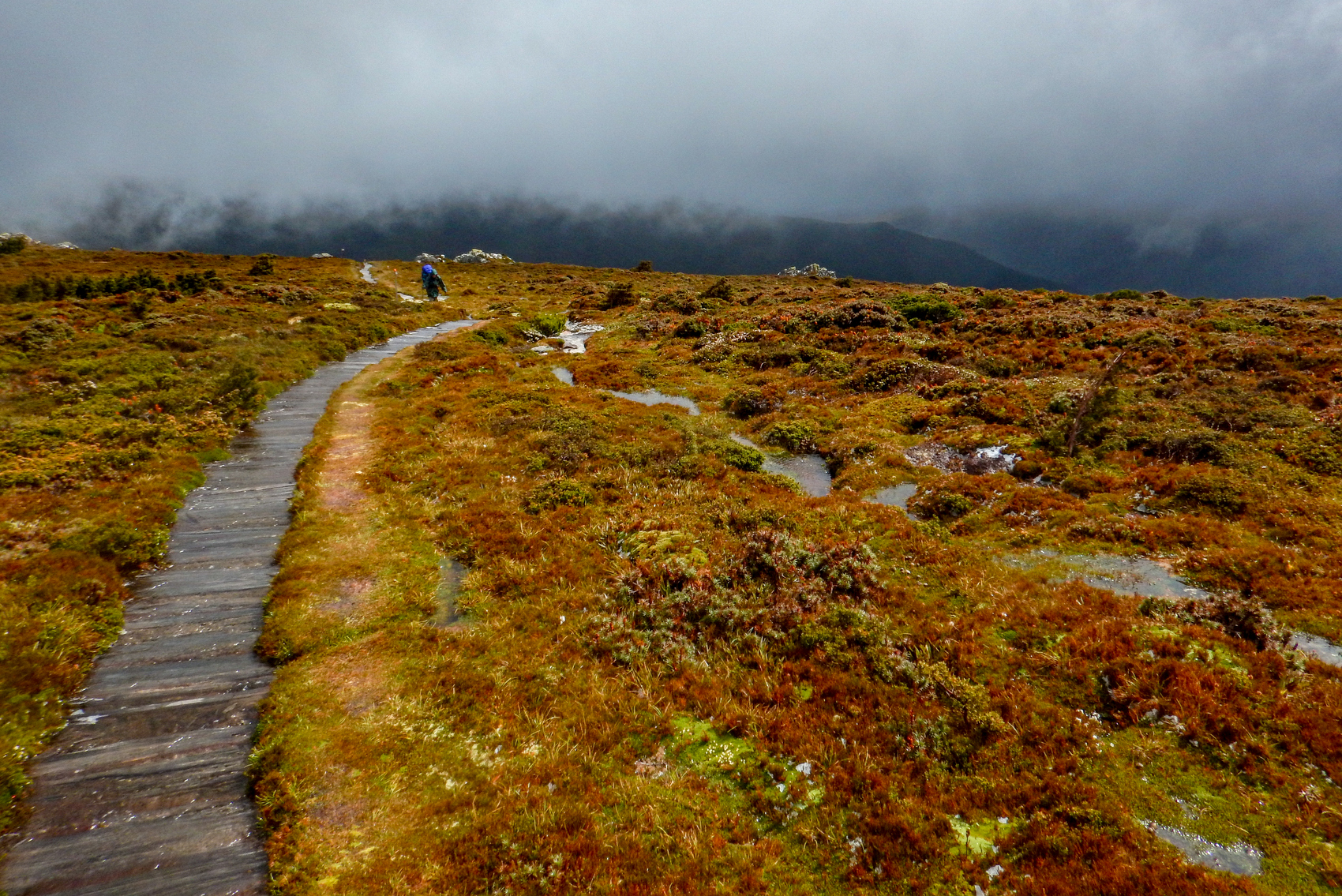
The Overland Track between Cradle Mountain and Lake St Clair is rightly considered one of the most spectacular multi-day hikes in the world. Granted, I haven’t done any others, but an experience like this isn’t easily matched.
The trail through the heart of the Tasmanian Wilderness World Heritage Area is a beautiful, yet challenging journey across glacial-formed landscape filled with spectacular flora and wildlife. More than 100 endemic plant species are found in the Cradle Mountain-Lake St Clair National Park.
Put simply, you will see things here you can’t see anywhere else in the world.
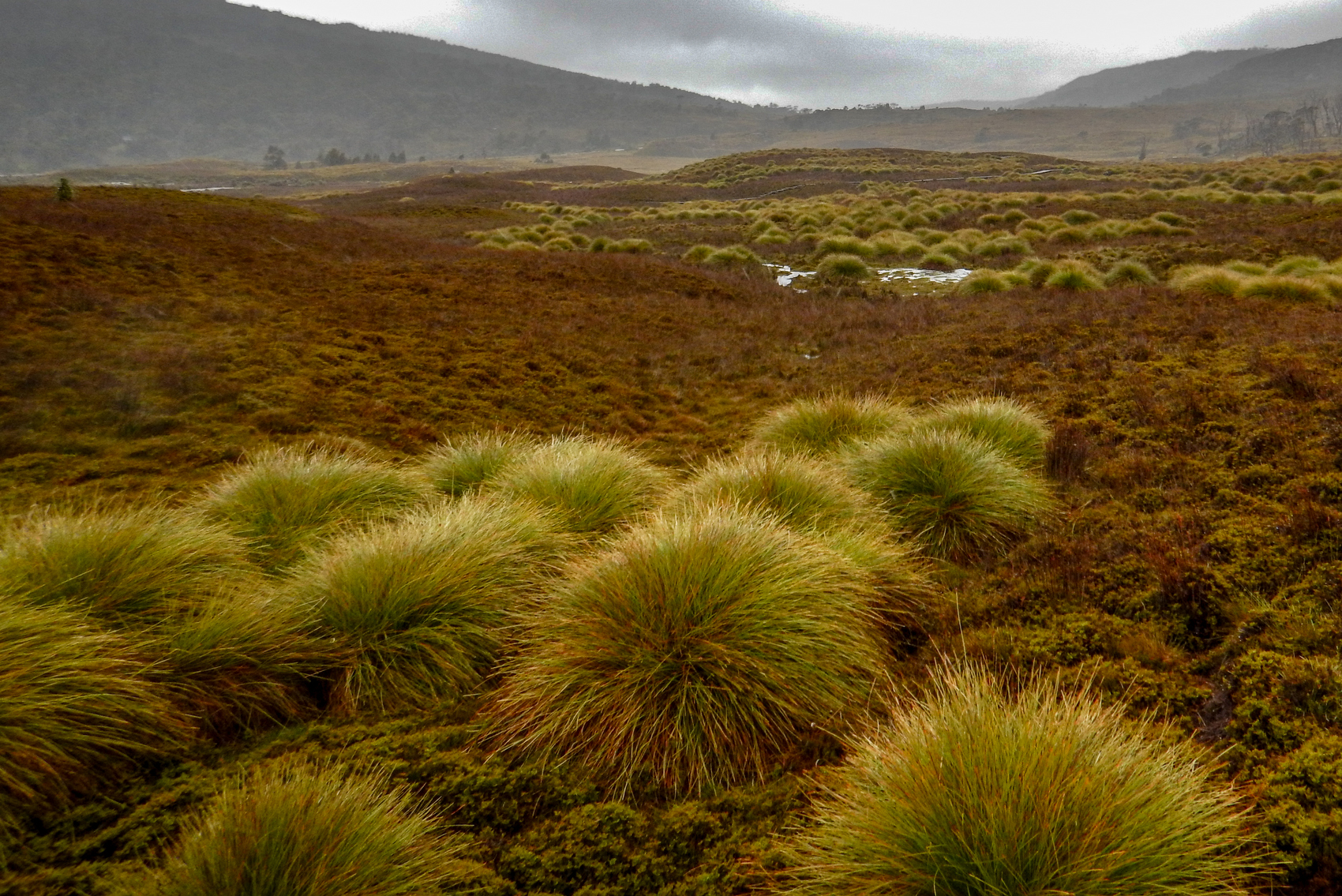
From start to finish the walk is 65 kilometres, but the ferry across Lake St Clair and the side trips along the route make that distance only an estimate. Most people complete the trek in six days, but I met walkers taking up to eight. Then there was the crazy Frenchman who did it in three, sipping an Uruguayan energy brew as he raced along the track.
Between June and October the track can be walked in either direction, but in peak season only a north-to-south journey is permitted and the number of walkers is capped. In January it’s particularly busy. I took the last available spot for my date when I booked four months earlier. Presumably, people think the weather in summer will be better. It’s a foolish assumption.
Completing the Overland Track has been a goal of mine 20 years in the making. That’s how long it’s been since my father walked the track, and I, too young to go at the time, set my sights on the same adventure.
Twenty years to get here and a few hours later I’m ready to pack it in.
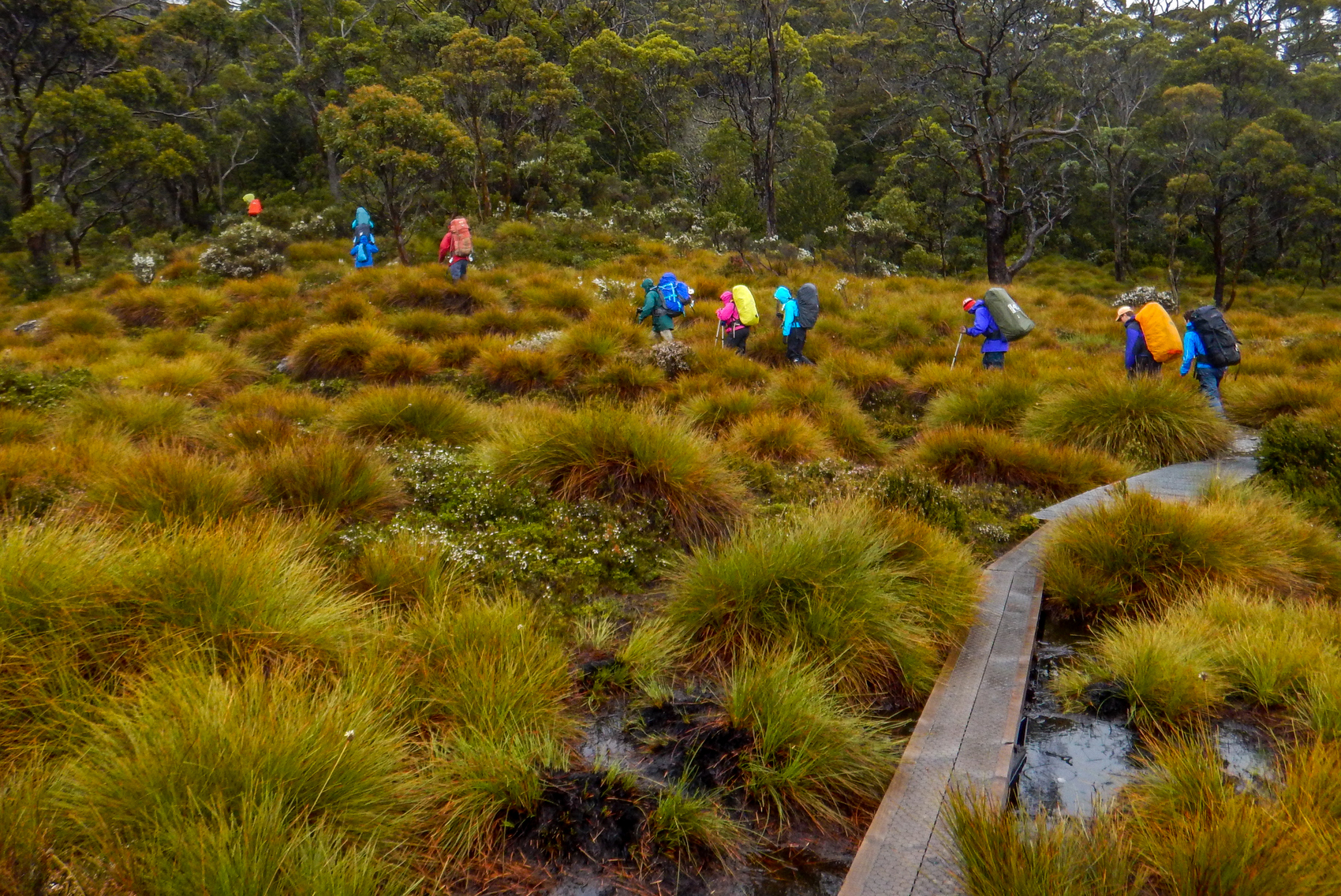
There is a point, when you are caught in rain, that you can not get any wetter. You are soaked through and whatever falls from the heavens after that is irrelevant.
I arrived at Cradle Mountain in the rain.
It was still raining when I returned to the visitor centre the next morning to check in for my walk, and an hour later when I posed for a photo at the beginning of the trail.
It rained all day.
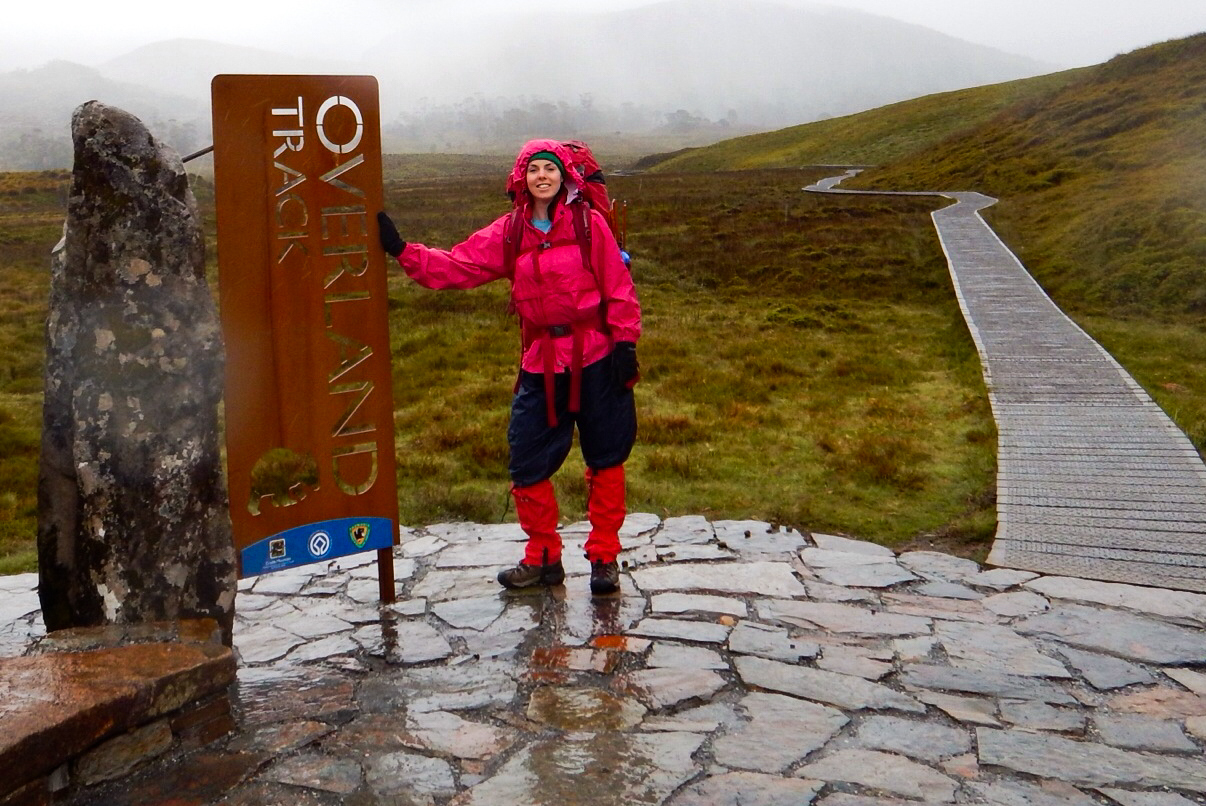
It’s the middle of summer, almost to the day, and the temperature is 4C, not including the wind-chill factor. No one complains. We’re all wet, cold and wondering whose idea this whole thing was.
The first day of the Overland Track is a test of fitness, commitment and endurance. I had prepared physically for the walk, but not mentally. I’ve walked in challenging, even dangerous, conditions before, but this…this is different.
The end is six days away. And right now, I’m not sure how I’ll see the end of the first one.
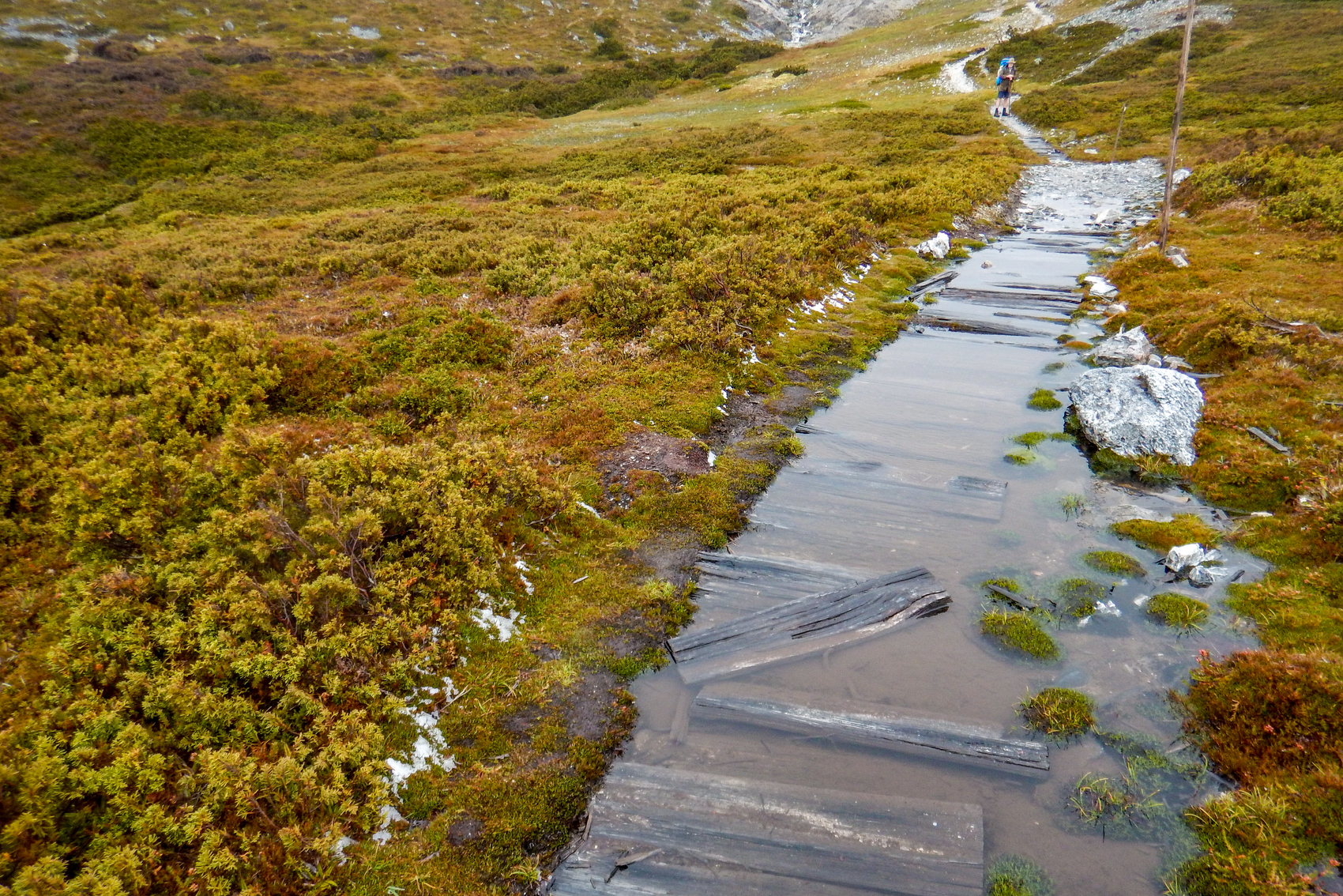
In the first hour the wind hits about 70 kilometres an hour and forces us off the main route. If there is a shred of silver lining it’s that we avoid the steepest section of the track – the climb to Marions Lookout. But although the Horse Track is less exposed it’s also less maintained and instead of the raised duckboard that would have marked our way along the plateau after Marions, we trudge along rotting boards. Some are no longer fixed to the ground, although I don’t realise that until I step on a floating piece of timber and land ankle deep in water.
Patches of ice dot the edge of the track in case I need a reminder of how cold it is.
I don’t like quitting. But when we stop at Kitchen Hut for lunch it’s all I can think about. My hands feel like slabs of ice and I alternate rubbing them together and sticking them in my pockets.
I stuff my face with lollies, craving the sugar hit and the sweetness on my tongue. A brief dose of pleasure for my otherwise numb body. I think about quitting again.
In the end I realise that as crap as I feel right now, the relief from giving up would be short. I would regret it.
When we covet experiences, we form a picture of how they will unfold. For me, walking the Overland Track was going to take me to the summit of Tasmania’s highest peaks. I was going to enjoy glorious sunrises and sunsets and photograph landscapes I might never see again.
In my backpack I would carry everything I needed to survive in the wilderness. I would be entirely self sufficient and knowing that made me feel independent, strong and capable. I was prepared for the aches that would remind my body I hadn’t done this before, but I was also itching for the sense of achievement that would come with completing such an epic adventure.
That is what walking the Overland Track was going to be like for me.
But on that first day, for a lot of the time, I was miserable. Any joy or excitement of starting such a significant journey was washed away by about 40mm of rain.
“For the next 5km you will enjoy sweeping views across the glacial landscape, before steadily descending into spectacular Waterfall Valley.”
The guidebook was wrong.
“For the next 5km, which will feel like 50km, you will be battered about by wind, struggle to spot your walking party through the fog, and be legitimately concerned for your safety.”
That’s better.
The clouds lift occasionally to give a cheeky glimpse of the back of Cradle Mountain or the tip of Barn Bluff – two mountains unconquered by me at this stage. There is a brief moment when we see the sun and blue skies. But it is short lived.
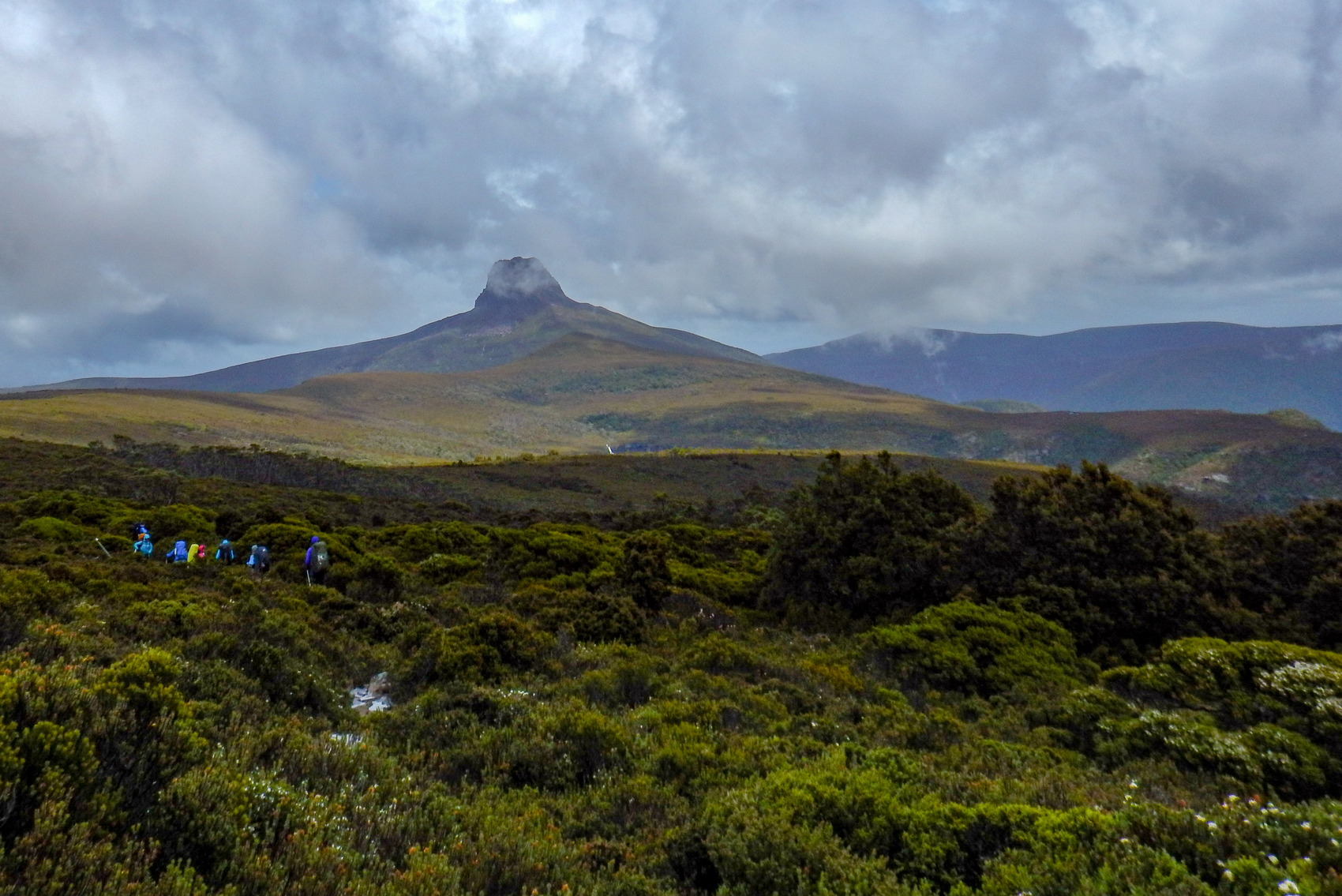
The track follows an exposed ridgeline, which makes me nervous. The puddles on the gravel part of the trail are almost preferable to the raised duckboard, on which I have to shuffle instead of walking to keep my feet close to the ground.
In the split second I have my foot raised to take a step, I feel the power of the wind as it tries to knock me over. My chin and right cheek stings from being pelted by rain. I can’t see the more than 15 metres or so ahead, often relying on the red-tipped snow markers for guidance.
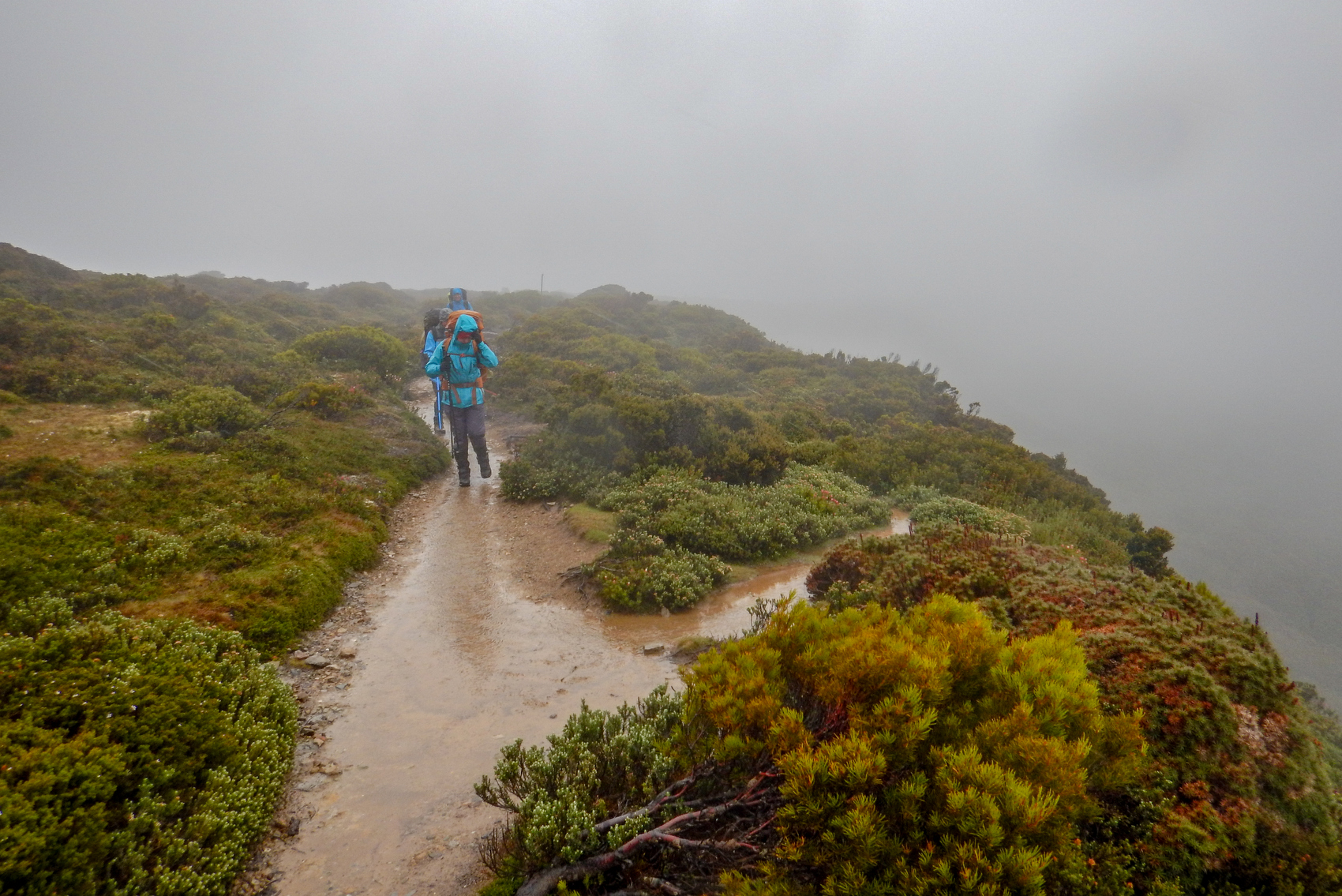
I mostly walk alone, only occasionally seeing the bright splash of a pack cover or a rain jacket belonging to someone else in the group. It’s not safe to stop.
Reaching Waterfall Valley brings overwhelming relief.
The hut officially sleeps 24 and there are up to 32 walkers arriving tonight. But in conditions like this the volunteer ranger promises no one will be forced to camp. She’ll fit us all in.
I unroll my sleeping bag to claim a spot on the long bunks where we will all sleep side by side. We crowd the small gas heater with our shivering bodies and wet clothes and pile up our drenched boots, although there is little hope of them being dry by the morning.
I add some boiling water into my pack of dehydrated spaghetti bolognese, a dish I will resent by the week’s end, before preparing for bed.
When brushing my teeth outside by the water tank, a wombat scurries past before disappearing into the scrub.
Late in the afternoon a school group arrives and the kids discover their sleeping bags are wet. I feel for them as I bury into my own.
When the wind howls through the hut later that night, I’m too exhausted to think about what that means for day two. The forecast predicts the weather will be better, but after the belting on day one, could it really get much worse?
The next morning I smear some sunscreen on my face, just in case, and look out the window to see a gentle sprinkle of hail.






